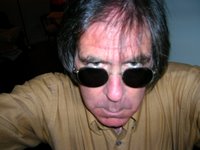October 29
 On the 29th in 1964, while in New York City, Jack “Murph the Surf” Murphy[i] visited the American Museum of Natural History[ii]. While walking around the museum he visited one of the restrooms and unlocked a window. Later that evening, Murph the Surf, accompanied by Alan Kuhn and Roger Clark returned to the museum after it had closed for the day. The 565-carat Star of India[iii] sapphire was the only gem protected by an alarm. Murph the Surf was pleasantly surprised to discover that the battery that powered the Star of India’s alarm was dead. He stole the gem and some others, most notably the Eagle Diamond and the de Long Ruby[iv]. The trio was arrested two days later. The Star of India was recovered from a locker in a Miami, Florida bus station. The Eagle Diamond[v] has never recovered.
On the 29th in 1964, while in New York City, Jack “Murph the Surf” Murphy[i] visited the American Museum of Natural History[ii]. While walking around the museum he visited one of the restrooms and unlocked a window. Later that evening, Murph the Surf, accompanied by Alan Kuhn and Roger Clark returned to the museum after it had closed for the day. The 565-carat Star of India[iii] sapphire was the only gem protected by an alarm. Murph the Surf was pleasantly surprised to discover that the battery that powered the Star of India’s alarm was dead. He stole the gem and some others, most notably the Eagle Diamond and the de Long Ruby[iv]. The trio was arrested two days later. The Star of India was recovered from a locker in a Miami, Florida bus station. The Eagle Diamond[v] has never recovered.[i] Murph was prosecuted by the Manhattan District Attorney’s office. Maurice Nadjari was the lead trial counsel for the DA.
[ii] J. P. Morgan was the major benefactor of the Museum. He also endowed the Metropolitan Museum of Art and Harvard University’s medical school.
[iii] Financier J. P. Morgan had donated the Star of India to the Museum of National History in 1900.
[iv] The de Long Star Ruby weighs 100.32 carats. It was a gift from Edith Haggin de Long.
[v] Charles Woods found the Eagle Diamond in 1876. Woods thought it was topaz, pretty but worthless. He sold it for $1.00 to Samuel Boynton who in turn sold it to Tiffany & Co. for $850.00. J. P. Morgan bought it from Tiffany and then presented it as a gift to the Museum to be displayed with the Star of India and the de Long Ruby.


0 Comments:
Post a Comment
<< Home